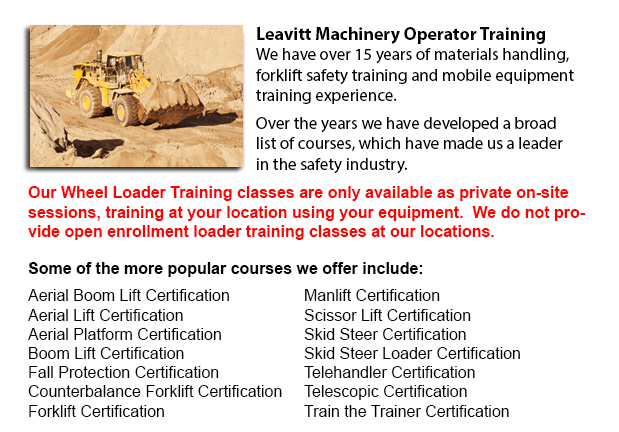
Lift trucks are available in several load capacities and several models. Nearly all lift trucks in a typical warehouse surroundings have load capacities between one to five tons. Larger scale units are used for heavier loads, like for example loading shipping containers, can have up to fifty tons lift capacity.
The operator can make use of a control in order to raise and lower the tines, that are also called "forks or tines." The operator can even tilt the mast so as to compensate for a heavy load's propensity to tilt the forks downward to the ground. Tilt provides an ability to operate on uneven ground also. There are yearly competitions for skilled forklift operators to compete in timed challenges as well as obstacle courses at local lift truck rodeo events.
General operations
All forklifts are rated for safety. There is a specific load limit and a specific forward center of gravity. This essential information is supplied by the manufacturer and located on the nameplate. It is vital cargo do not go beyond these specifications. It is against the law in numerous jurisdictions to tamper with or remove the nameplate without getting permission from the forklift manufacturer.
The majority of lift trucks have rear-wheel steering so as to increase maneuverability. This is very effective within confined spaces and tight cornering areas. This type of steering varies rather a bit from a driver's first experience along with different vehicles. In view of the fact that there is no caster action while steering, it is no needed to utilize steering force so as to maintain a constant rate of turn.
Unsteadiness is another unique characteristic of forklift operation. A continuously varying centre of gravity happens with every movement of the load amid the forklift and the load and they need to be considered a unit during use. A lift truck with a raised load has centrifugal and gravitational forces which can converge to bring about a disastrous tipping mishap. To be able to prevent this possibility, a forklift should never negotiate a turn at speed with its load raised.
Forklifts are carefully built with a load limit intended for the forks. This limit is decreased with undercutting of the load, which means the load does not butt against the fork "L," and likewise decreases with fork elevation. Generally, a loading plate to consult for loading reference is positioned on the forklift. It is unsafe to utilize a forklift as a personnel lift without first fitting it with certain safety equipment such as a "cherry picker" or "cage."
Forklift use in distribution centers and warehouses
Lift trucks are an important component of warehouses and distribution centers. It is essential that the work surroundings they are placed in is designed to be able to accommodate their safe and efficient movement. With Drive-In/Drive-Thru Racking, a lift truck must travel within a storage bay which is several pallet positions deep to set down or get a pallet. Operators are normally guided into the bay through rails on the floor and the pallet is positioned on cantilevered arms or rails. These confined manoeuvres need skillful operators so as to complete the job efficiently and safely. In view of the fact that every pallet needs the truck to go into the storage structure, damage done here is more common than with other kinds of storage. If designing a drive-in system, considering the size of the tine truck, along with overall width and mast width, should be well thought out to be able to ensure all aspects of a safe and effective storage facility.
-
Zoom Boom Training Prince Albert
Zoom Boom Training Prince Albert - Zoom Boom Training focuses on correctly training potential operators on variable reach forklifts. The training objectives include gaining the understanding of the machine's physics and to be able to define the job o... More -
Bucket Truck Training Prince Albert
Bucket Truck Training Prince Albert - The Vehicle-Mounted Aerial Work Platform or also called bucket truck training program is intended to reduce the chance of incident and personal injury when working with or in close proximity to bucket trucks by e... More -
Aerial Lift Training Prince Albert
Aerial Lift Training Prince Albert - An aerial work platform is a mechanized access platform. This device provides access to otherwise not accessible places for people or equipment. Likewise called an aerial device or elevating work platform, the mac... More -
Overhead Crane Ticket Prince Albert
Overhead Crane Ticket Prince Albert - The overhead crane is a common heavy machinery utilized in industrial settings. This particular machine is known as a bridge crane and comprises parallel runways spanned by a traveling bridge. The hoist is the co... More -
Scissor Lift Ticket Prince Albert
Scissor Lift Ticket Prince Albert - Scissor lifts have greatly benefited construction operations because the task that used to need a lot of effort and lots of people, can now be accomplished using the scissor lift and just one individual, the operat... More -
Manlift Training Prince Albert
Manlift Training Prince Albert - Different manlift training programs include the review and content of manlift devices. An essential part of the program is the practicum where students demonstrate their knowledge and practical ability to operate the... More -
Skid Steer Loader Training in Prince Albert
The engine powered skid-steer loader consists of a rigid and small frame, equipped along with lift arms which could attach to various industrial attachments and tools to be able to perform various labor saving tasks. Normally, skid-steer loaders are... More -
Crane Training School Prince Albert
Crane Training School Prince Albert - We provide industry relevant programs in our crane training school. The course will provide our trainees with learning outcomes matching the existing industry demands. Our small class sizes combine theory and han... More

Forklift Training Prince Albert
TOLL FREE: 1-888-254-6157
Prince Albert, Saskatchewan
forklifttrainingprincealbert.com
Email Us
About Us


